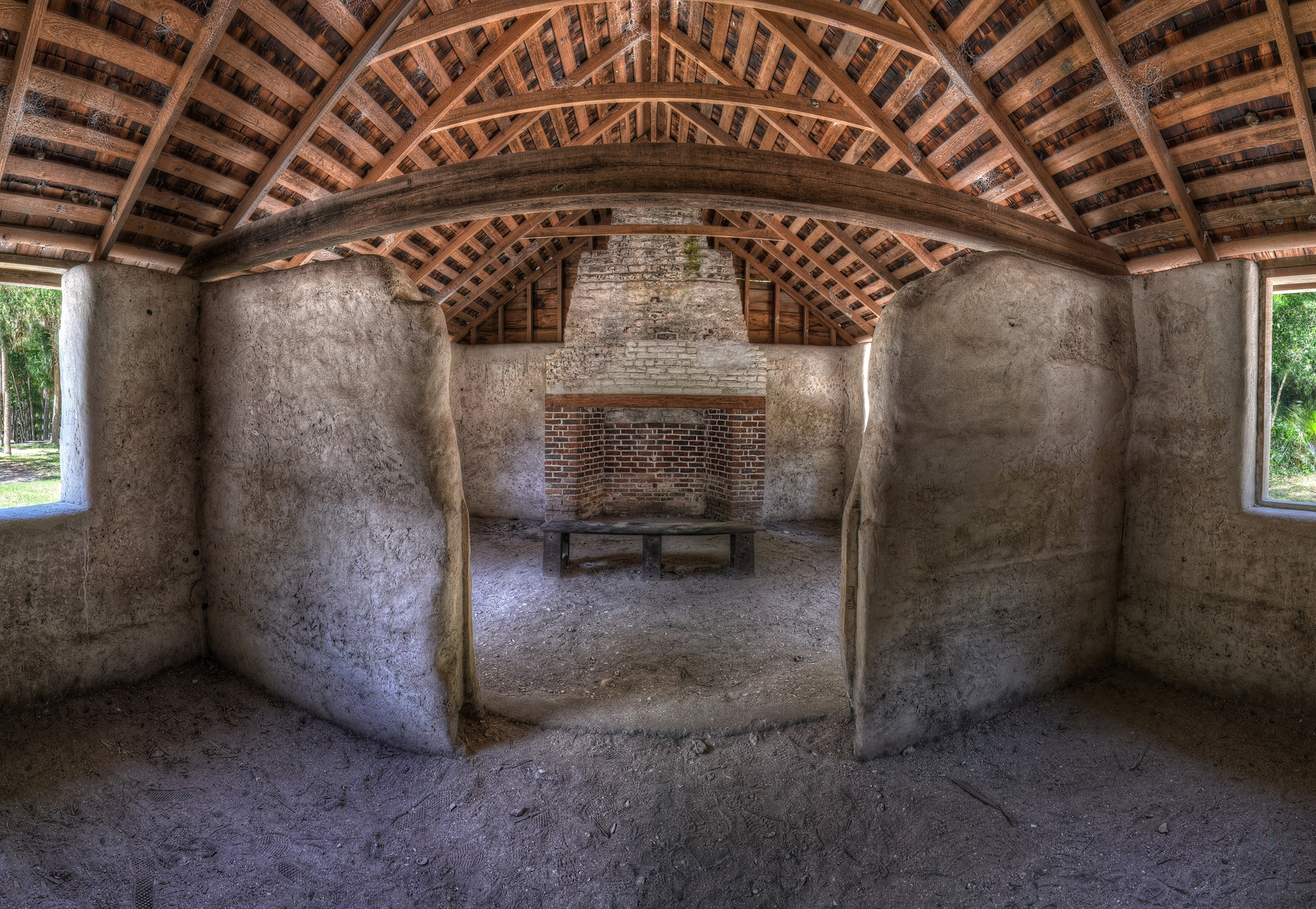
If these walls could speak, they would speak of a life of bondage. At the slave cabins, the walls would tell about family life in the slave community and families’ struggles to remain courageous and strong in the face of bondage in a strange land.
The barn walls would tell about the tools, sacks, bales of cotton, corn, horses and livestock stored in and around the barn.
The kitchen walls would recount the preparation of countless meals and stories told by the enslaved kitchen workers to pass the long day of work and heat.
The slave cabins were built in the 1820s, during Zephaniah Kingsley’s ownership of the plantation. These buildings have borne witness to nearly two hundred years of history on Fort George Island.
For the enslaved people, plantation life revolved around these tabby structures. The tabby slave quarters, barn and kitchen house were centers of activity for the plantation and its workers. Tabby was a constant backdrop to life for everyone at this plantation. Each morning enslaved men, women and children opened their eyes to the sight of four tabby walls. They began their day’s labor in the cool, dark tabby barn, gathering their tools and supplies. At night, they closed their eyes to the walls surrounding them.
Today, the slave cabins, barn, kitchen house and main plantation house, built by enslaved people, are lasting relics of a life of bondage and struggle. They may look like ancient ruins, but the slave cabins were built less than two hundred years ago.
This is an HDR panorama consisting of 4 sets of 9 exposure shots (36 images) merged in CS5 taken at the Kingsley Plantation. My camera at the time only bracketed 3 shots but tethered to my Galaxy S2 phone I can bracket any number of shots. The Plantation is only about 12 miles from the house as the crow flies.
You may purchase If these walls could speak or view more of my work from the plantation here.
The National Park Service maintains the Kingsley Plantation and the link to visit is here.

